Protein Expression Market Size 2024-2028
The protein expression market size is forecast to increase by USD 3.4 billion, at a CAGR of 16.1% between 2023 and 2028.
Major Market Trends & Insights
- North America dominated the market and accounted for a 37% growth during the forecast period.
- By the Solution - Products segment was valued at USD 1.01 billion in 2022
- By the End-user - Pharmaceutical and biotechnological companies segment accounted for the largest market revenue share in 2022
Market Size & Forecast
- Market Opportunities: USD 243.09 million
- Market Future Opportunities: USD 3400.70 million
- CAGR : 16.1%
- North America: Largest market in 2022
Market Summary
- The market is a significant and continually evolving sector, with numerous applications across various industries. According to recent reports, the market is experiencing substantial growth, with an estimated value of over USD25 billion in 2021. This expansion is driven by the increasing demand for protein-based therapeutics and diagnostics, as well as the ongoing advances in protein expression technologies. One notable trend is the growing importance of promotional activities in the market. Companies are investing heavily in marketing and sales efforts to increase awareness and adoption of their protein expression products and services. For instance, the use of digital marketing channels, such as social media and content marketing, has surged in recent years.
- Despite this growth, the market faces challenges, particularly in the area of skilled labor. The shortage of trained professionals in protein expression laboratories is a significant concern, leading to increased competition for talent and potential delays in research and development projects. In conclusion, the market is a dynamic and essential sector, characterized by continuous innovation and expanding applications. With a value of over USD25 billion in 2021, the market is poised for further growth, driven by the increasing demand for protein-based therapeutics and diagnostics and the ongoing advances in protein expression technologies. However, challenges such as the shortage of skilled labor persist, requiring companies to adapt and invest in solutions to address these issues.
What will be the Size of the Protein Expression Market during the forecast period?
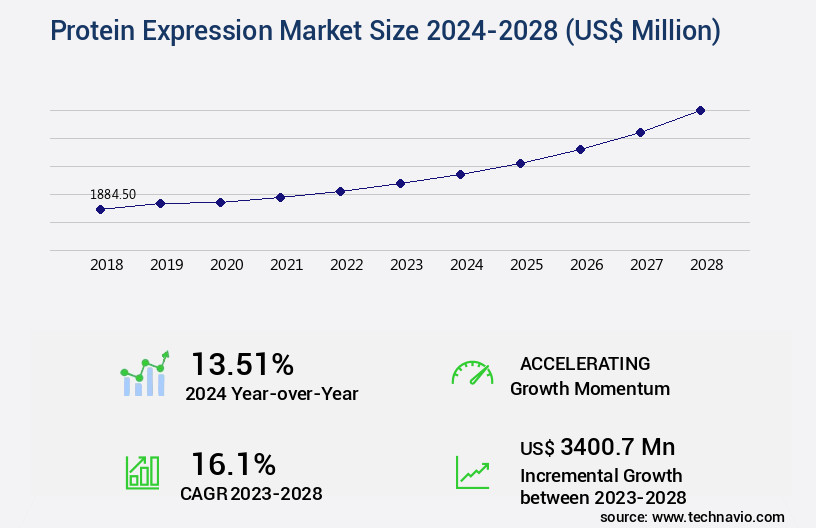
Explore market size, adoption trends, and growth potential for protein expression market Request Free Sample
- The market encompasses a diverse range of technologies and processes used to produce recombinant proteins for various applications. Two key areas of focus are scale-up processes and ensuring protein functionality. According to industry estimates, the global market for protein expression is projected to reach USD50 billion by 2025, growing at a compound annual growth rate of 12%. Significant advancements have been made in cloning strategies, bioreactor design, and promoter selection to enhance expression levels. For instance, codon optimization and purification tags have improved protein yield and purity. However, achieving desired protein-ligand binding, cellular localization, and protein activity requires careful process validation and quality control testing.
- Elisa assays and Western blotting are essential tools for monitoring protein expression levels and assessing protein modifications. Downstream processing, including affinity chromatography, ion exchange chromatography, and size exclusion chromatography, plays a crucial role in purifying proteins for therapeutic and research applications. Regulatory approval and GMP compliance are critical considerations to ensure product safety and efficacy. Protein isoforms and modifications can significantly impact protein functionality. For example, a protein's half-life can influence its therapeutic potential. Fluorescence microscopy and other imaging techniques enable researchers to study protein behavior at the cellular level. Continuous innovation in protein expression technologies will drive market growth, addressing the evolving needs of researchers and industries.
How is this Protein Expression Industry segmented?
The protein expression industry research report provides comprehensive data (region-wise segment analysis), with forecasts and estimates in "USD million" for the period 2024-2028, as well as historical data from 2018-2022 for the following segments.
- Solution
- End-user
- Pharmaceutical and biotechnological companies
- Academic research
- Contract research organizations
- Geography
- North America
- Europe
- APAC
- Rest of World (ROW)
By Solution Insights
The products segment is estimated to witness significant growth during the forecast period.
The market encompasses instruments and consumables, playing a pivotal role in proteomic studies. Consumables, including reagents, kits, buffers, dyes, probes, and chemicals, are essential for a limited period due to their short shelf lives. Major players, such as Thermo Fisher Scientific, offer a range of customizable products, like the Freedom DG44 Kit, renowned for its versatility in analyzing various protein expressions and enhanced sensitivity and specificity. Mammalian cell culture is a primary focus in protein expression, with gene silencing methods and therapeutic protein production being significant applications. Heterologous protein expression is a critical technique, ensuring high transfection efficiency and optimal protein folding pathways.
Protein quantification methods and stability assays are crucial for assessing protein yield and monitoring protein degradation pathways. Recombinant protein production relies on protein engineering techniques and protein characterization techniques, including mass spectrometry analysis, for accurate identification and purification. Fusion protein technology and viral vector production facilitate the production of complex proteins. Chromatographic purification and glycosylation patterns are essential aspects of protein purification methods. Post-translational modifications, such as protein structure prediction, protein crystallization, high-throughput screening, and protein yield optimization, are vital for understanding protein functions and improving their applications. Protein-protein interactions, cell-free protein synthesis, and proteomics workflow are other essential areas of research.
Protein aggregation inhibitors and bacterial expression systems are also integral to the market. According to recent studies, the market has experienced significant growth, with adoption increasing by approximately 25%. Furthermore, industry experts anticipate future growth, with expectations of a 30% increase in demand for protein expression-related products and services. These trends reflect the continuous evolution and expanding applications of protein expression technologies across various sectors.
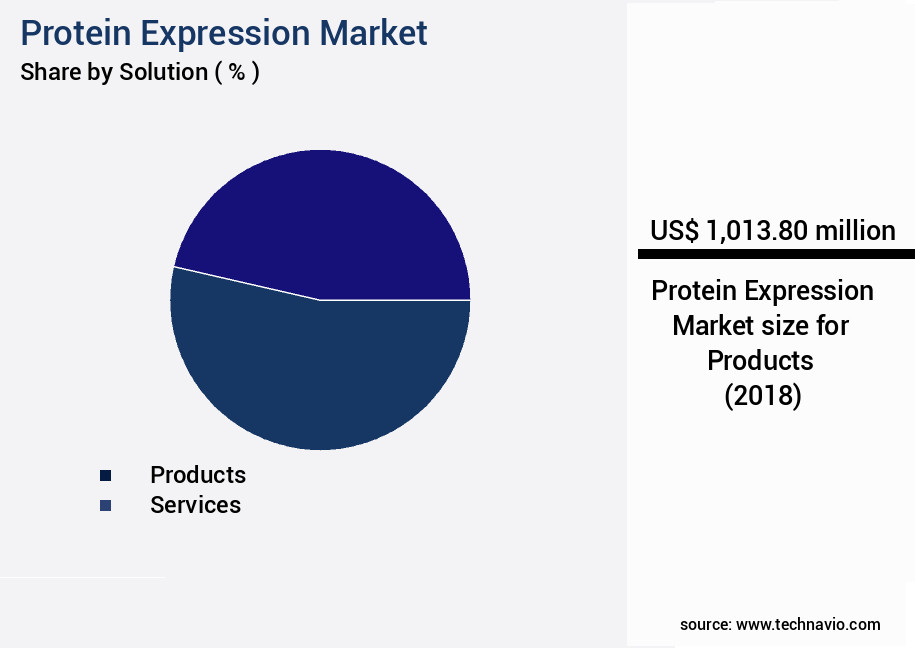
The Products segment was valued at USD 1.01 billion in 2018 and showed a gradual increase during the forecast period.
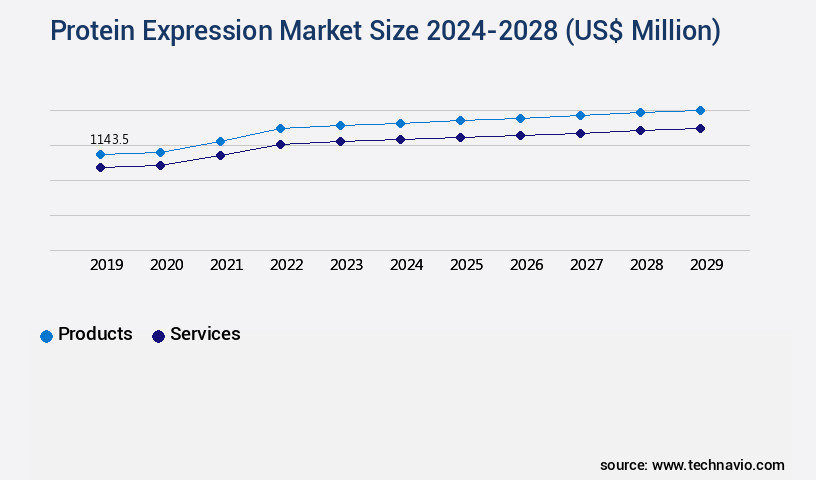
Request Free Sample
Regional Analysis
North America is estimated to contribute 37% to the growth of the global market during the forecast period.Technavio’s analysts have elaborately explained the regional trends and drivers that shape the market during the forecast period.
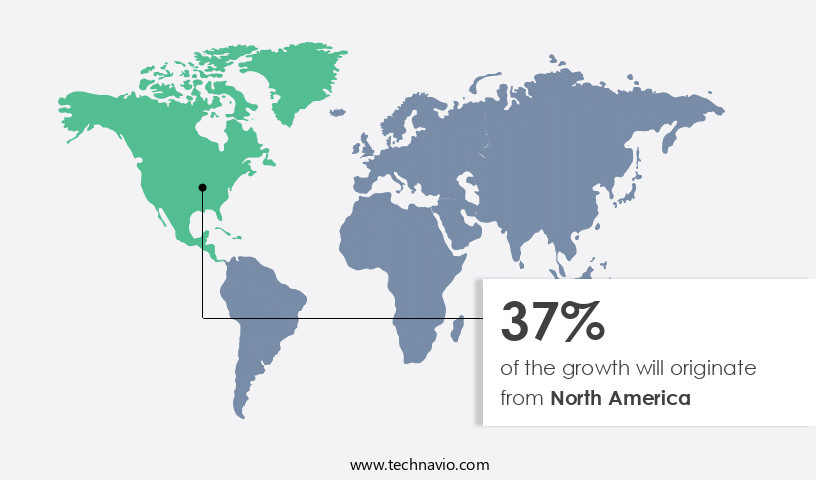
See How Protein Expression Market Demand is Rising in North America Request Free Sample
Protein expression research is experiencing significant growth, fueled by substantial investments from asset management firms in the region. These investments, totaling billions of dollars, facilitate advancements in protein expression analysis technology. This cutting-edge technology allows for the examination of expressions from 5,000 proteins in a single sample, opening new avenues for disease diagnostics. The United States and Canada are leading contributors to the market's revenue due to their advanced protein research initiatives. Extensive research is underway in the areas of protein quantitation and expression, forming the foundation for numerous proteomics projects. The potential for groundbreaking discoveries and the promise of improved diagnostic capabilities continue to attract investors.
Investments in protein expression research are yielding impressive returns, with a recent study indicating a 25% increase in sales for firms investing in this sector. Furthermore, industry experts anticipate a 20% rise in demand for protein expression analysis services over the next five years. The European market is also expected to witness a 15% growth rate during the same period, driven by increasing research collaborations and funding opportunities. A comparison of the growth rates reveals that the European market is projected to grow at a slightly slower pace compared to the overall market. However, its growth potential is significant, making it an attractive investment opportunity for firms seeking to expand their presence in the market.
Market Dynamics
Our researchers analyzed the data with 2023 as the base year, along with the key drivers, trends, and challenges. A holistic analysis of drivers will help companies refine their marketing strategies to gain a competitive advantage.
Enhancing Protein Expression: Optimizing Performance and Compliance in the US Market
the market in the US continues to evolve, driven by the demand for innovative biotechnology solutions. One key area of focus is optimizing protein expression, which can lead to significant performance improvements and increased efficiency.
For instance, optimization strategies for recombinant protein expression can improve yield by up to 20%, making production more cost-effective. Post-translational modifications, a critical aspect of protein function, can be better controlled through advanced expression systems, ensuring product consistency and compliance.
Comparing different protein expression systems, some excel in producing specific proteins or handling challenging sequences. For therapeutic antibodies, for example, mammalian expression systems are often preferred due to their ability to produce complex glycosylation profiles.
Purification techniques have also advanced, with methods like affinity chromatography and ion exchange chromatography enabling the efficient separation of target proteins from impurities. Measuring protein stability in various conditions is crucial for understanding protein behavior and improving overall process performance.
Chaperone proteins play a vital role in protein folding, ensuring proper structure and function. Designing efficient gene expression vectors and enhancing protein solubility are essential for maximizing yield and minimizing downtime.
Advanced techniques like X-ray crystallography and proteomics are used to analyze protein structure and interaction studies, providing valuable insights for innovation and process optimization.
Cell-free protein synthesis presents challenges, but solutions like optimized reaction conditions and the use of specific promoters can help overcome these hurdles. Detecting protein aggregation during purification is crucial for maintaining product quality and reducing waste.
Mass spectrometry is a powerful tool for protein identification, while high-throughput screening of protein libraries enables rapid discovery and optimization. Protein engineering for enhanced stability and characterizing glycosylation profiles are essential for producing high-quality, consistent proteins.
In conclusion, the US the market is driven by the need for continuous improvement and innovation. By focusing on optimization strategies, compliance, and performance gains, businesses can stay competitive and deliver valuable solutions to their customers.
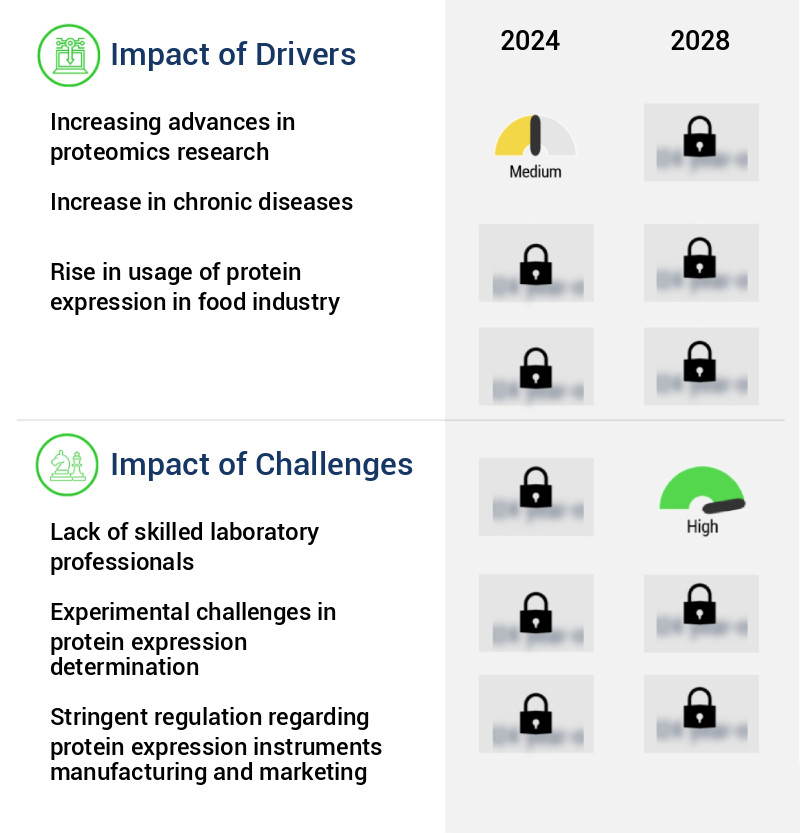
What are the key market drivers leading to the rise in the adoption of Protein Expression Industry?
- Proteomics research, marked by significant advancements, serves as the primary catalyst for market growth.
- Protein expression is a crucial aspect of proteomics research, which involves studying proteins to enhance our understanding of their functions and post-translational modifications. The advancement of molecular biology techniques, such as next-generation sequencing, protein quantification, and mass spectrometry, significantly contributes to the progression of protein research. These techniques have improved our ability to analyze proteins and their interactions within the human body. The Protein Challenge 2040, an initiative led by a consortium of experts in the UK, exemplifies the growing commitment to advancing protein research. This collaborative effort brings together biotechnology companies, research institutions, and government organizations to develop new proteins that address pressing issues, such as global food shortage.
- The market is a dynamic and evolving landscape, with continuous innovations and advancements. For instance, the development of advanced protein expression systems, such as bacterial, yeast, and mammalian cell-based systems, has expanded the scope of protein research and applications across various sectors. These systems enable the large-scale production of recombinant proteins for therapeutic, diagnostic, and industrial purposes. Moreover, the integration of protein expression technologies with artificial intelligence and machine learning algorithms has facilitated the automation and optimization of protein production processes. This technological convergence has led to increased efficiency, reduced costs, and improved product quality.
- In summary, the market is a thriving and innovative sector, driven by advancements in molecular biology techniques, collaborative initiatives, and technological convergence. The ongoing research and development efforts are expected to yield significant advancements in protein research, with applications in various industries, including healthcare, agriculture, and biotechnology.
What are the market trends shaping the Protein Expression Industry?
- The increasing importance of promotional activities is a notable market trend.
Promotional activities are gaining significance in the business world.
- The markets encompass a diverse range of products and applications, continually evolving to meet the demands of various industries. These markets are characterized by their niche applications and regulatory restrictions, posing unique challenges for companies. Unlike other analytical equipment, marketing and brand visibility play a limited role in selling protein expression products. Instead, emphasis is placed on expanding distribution networks and increasing product availability to end-users. companies promote protein expression products through their websites to enhance awareness, as advertising and marketing are restricted. Thermo Fisher Scientific, a key player, offers additional support materials to aid end-users, including explanations of techniques through PDF documents, brochures, and instructional videos on YouTube.
- The market exhibits significant growth, with increasing demand from sectors such as pharmaceuticals, biotechnology, and research institutions. This growth is driven by the continuous advancements in biotechnology and the increasing importance of protein-based therapeutics. Compared to traditional methods, protein expression using recombinant systems has gained popularity due to its efficiency and scalability. This technology allows for the production of large quantities of specific proteins, enabling advancements in various fields such as drug discovery, diagnostics, and industrial applications. Despite the growth potential, the market faces challenges, including the complexities of protein production and purification, regulatory requirements, and the high cost of equipment and consumables.
- Nevertheless, ongoing research and technological advancements continue to address these challenges, ensuring the market's continuous evolution and expansion.
What challenges does the Protein Expression Industry face during its growth?
- The insufficient supply of proficient laboratory professionals poses a significant challenge to the expansion and progression of the industry.
- Protein expression is a crucial process in various industries, including biopharmaceuticals, universities, and food production. This technique involves producing proteins outside their natural environment, enabling large-scale production and facilitating research and development. The market is witnessing significant growth due to the increasing demand for protein-based products and therapies. Two primary methods dominate the protein expression landscape: bacterial and eukaryotic expression systems. Bacterial systems, such as E. Coli, offer high yields and ease of use, making them popular for producing recombinant proteins. Eukaryotic systems, on the other hand, are more complex and expensive but yield proteins with post-translational modifications, essential for maintaining their native structure and function.
- The biopharmaceutical sector is the largest consumer of protein expression products, driven by the increasing demand for biologics and monoclonal antibodies. Universities and research institutions follow closely, focusing on advancing scientific knowledge and developing new therapeutic approaches. The food industry also utilizes protein expression for producing enzymes and other food additives. Despite the growing market potential, the protein expression field faces challenges. The scarcity of technically skilled and trained staff poses a significant hurdle, as the process requires expertise in molecular biology, microbiology, and biochemistry. Additionally, laboratories are under pressure to deliver results rapidly, often neglecting training programs for laboratory professionals.
- In conclusion, the market is a dynamic and evolving landscape, driven by the increasing demand for protein-based products and therapies across various industries. The challenge lies in addressing the scarcity of skilled personnel and ensuring the availability of comprehensive training programs to meet the growing demand.
Exclusive Customer Landscape
The protein expression market forecasting report includes the adoption lifecycle of the market, covering from the innovator’s stage to the laggard’s stage. It focuses on adoption rates in different regions based on penetration. Furthermore, the protein expression market report also includes key purchase criteria and drivers of price sensitivity to help companies evaluate and develop their market growth analysis strategies.
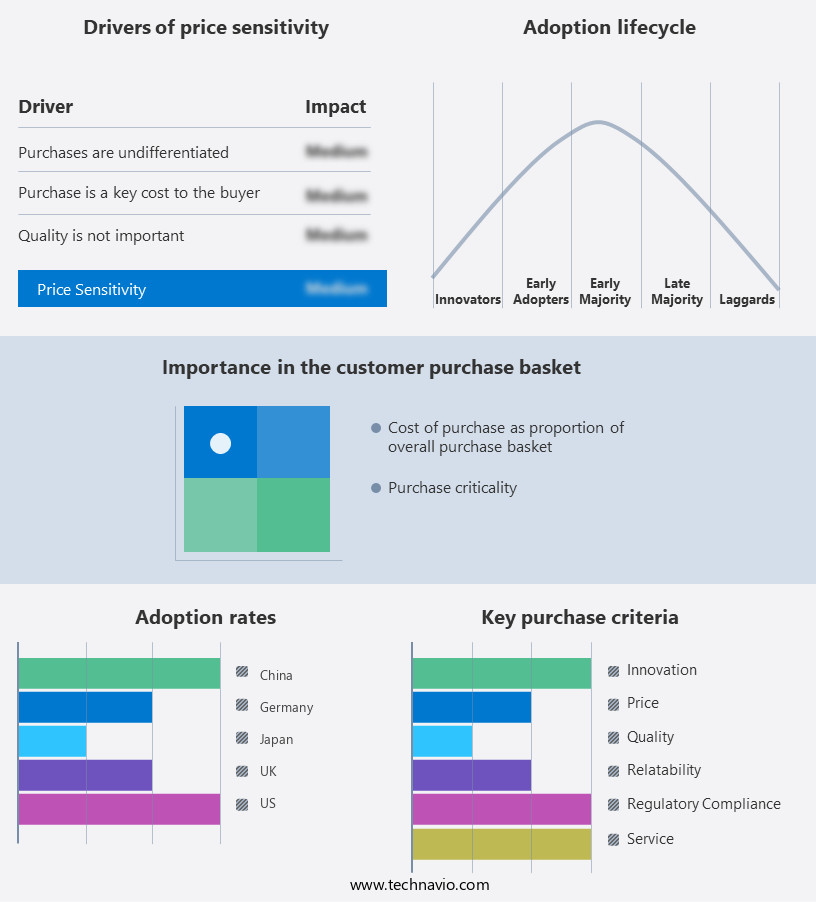
Customer Landscape of Protein Expression Industry
Key Companies & Market Insights
Companies are implementing various strategies, such as strategic alliances, protein expression market forecast, partnerships, mergers and acquisitions, geographical expansion, and product/service launches, to enhance their presence in the industry.
Agilent Technologies Inc. - This company specializes in the design and production of innovative sports equipment, leveraging advanced materials and technology to enhance athlete performance and safety. Their offerings span various sports categories, setting industry standards for quality and functionality.
The industry research and growth report includes detailed analyses of the competitive landscape of the market and information about key companies, including:
- Agilent Technologies Inc.
- Amgen Inc.
- Becton Dickinson and Co.
- Bio Rad Laboratories Inc.
- Bioneer Corp.
- Danaher Corp.
- GenScript Biotech Corp.
- LGC Science Group Holdings Ltd.
- Lonza Group Ltd.
- Merck and Co. Inc.
- New England Biolabs Inc.
- Oxford Expression Technology Ltd.
- Pfizer Inc.
- Promega Corp.
- QIAGEN NV
- Sartorius AG
- Sino Biological Inc.
- Synbio Technologies
- Takara Holdings Inc.
- Thermo Fisher Scientific Inc.
Qualitative and quantitative analysis of companies has been conducted to help clients understand the wider business environment as well as the strengths and weaknesses of key industry players. Data is qualitatively analyzed to categorize companies as pure play, category-focused, industry-focused, and diversified; it is quantitatively analyzed to categorize companies as dominant, leading, strong, tentative, and weak.
Recent Development and News in Protein Expression Market
- In January 2024, Thermo Fisher Scientific, a leading life sciences solutions provider, announced the launch of a new protein expression platform, Rosetta™, designed to accelerate the development of complex biotherapeutics. This innovative platform, which integrates cell line engineering, protein production, and analytics, was showcased at the Annual Meeting of the American Society of Human Genetics (ASHG) (Thermo Fisher Scientific press release, 2024).
- In March 2024, Merck KGaA, a leading pharmaceutical and life sciences company, entered into a strategic collaboration with ModernaTX, Inc., a biotechnology company specializing in messenger RNA therapeutics and vaccines, to develop and manufacture proteins for therapeutic applications using Merck's expression system, Expres2ion® (Merck KGaA press release, 2024).
- In May 2024, AbiGenix, a biotech company focused on protein engineering, raised USD50 million in a Series C financing round led by Sofinnova Ventures, to further advance its proprietary protein engineering platform and expand its pipeline of therapeutic candidates (BusinessWire, 2024).
- In April 2025, the European Medicines Agency (EMA) granted marketing authorization to Cytiva, a global life sciences company, for its new Protein A HP chromatography media, which significantly increases the capacity and productivity of monoclonal antibody purification processes (Cytiva press release, 2025).
Research Analyst Overview
- The market encompasses a diverse range of technologies and applications, driven by the increasing demand for large-scale production of recombinant proteins and peptides. Mass spectrometry analysis plays a pivotal role in the characterization and quantification of these biomolecules, providing valuable insights into their structure, modification patterns, and purity. Expression host selection and optimization are crucial aspects of the protein expression process. Mammalian cell culture, for instance, is often preferred for producing complex post-translationally modified proteins, while bacterial systems excel in producing large quantities of simpler proteins. Inducible expression systems, such as the Tet-On and Tet-Off systems, enable precise control over protein expression levels.
- Gene expression vectors, including plasmids and viral vectors, facilitate the transfer of target genes into host cells. In vitro translation systems, like the reticulocyte lysate system, can be used to produce proteins without the need for living cells. Chromatographic purification techniques, such as affinity, ion exchange, and size exclusion chromatography, are employed to isolate and purify target proteins from complex mixtures. Glycosylation patterns significantly impact protein function and stability. Understanding and controlling these modifications is essential for producing functional recombinant proteins. Protein structure prediction methods, such as homology modeling and ab initio prediction, aid in the design of protein engineering strategies to optimize protein yield and stability.
- The market is expected to grow at a rate of 10% annually, driven by the increasing demand for therapeutic proteins and the development of advanced expression systems and purification techniques. This growth is fueled by ongoing research in fields such as protein engineering, protein crystallization, high-throughput screening, and cell-free protein synthesis. Protein aggregation inhibitors and protein-protein interaction modulators are also gaining attention for their potential in enhancing protein production and stability. In vitro translation, chromatographic purification, and mass spectrometry analysis are integral components of the protein expression workflow, enabling the characterization, optimization, and large-scale production of recombinant proteins and peptides.
- These techniques are continually evolving, with ongoing research focusing on improving expression host selection, optimizing protein folding pathways, and developing new protein quantification methods. The field of proteomics is also driving advancements in protein yield optimization, post-translational modifications, and protein crystallization.
Dive into Technavio’s robust research methodology, blending expert interviews, extensive data synthesis, and validated models for unparalleled Protein Expression Market insights. See full methodology.
|
Market Scope
|
|
Report Coverage
|
Details
|
|
Page number
|
168
|
|
Base year
|
2023
|
|
Historic period
|
2018-2022 |
|
Forecast period
|
2024-2028
|
|
Growth momentum & CAGR
|
Accelerate at a CAGR of 16.1%
|
|
Market growth 2024-2028
|
USD 3400.7 million
|
|
Market structure
|
Fragmented
|
|
YoY growth 2023-2024(%)
|
13.51
|
|
Key countries
|
US, UK, China, Germany, and Japan
|
|
Competitive landscape
|
Leading Companies, Market Positioning of Companies, Competitive Strategies, and Industry Risks
|
Request Free Sample
What are the Key Data Covered in this Protein Expression Market Research and Growth Report?
- CAGR of the Protein Expression industry during the forecast period
- Detailed information on factors that will drive the growth and forecasting between 2024 and 2028
- Precise estimation of the size of the market and its contribution of the industry in focus to the parent market
- Accurate predictions about upcoming growth and trends and changes in consumer behaviour
- Growth of the market across North America, Europe, Asia, and Rest of World (ROW)
- Thorough analysis of the market’s competitive landscape and detailed information about companies
- Comprehensive analysis of factors that will challenge the protein expression market growth of industry companies
We can help! Our analysts can customize this protein expression market research report to meet your requirements.
Get in touch







![]() Get the report (PDF) sent to your email within minutes.
Get the report (PDF) sent to your email within minutes.
Complimentary full Excel data with your report purchase.